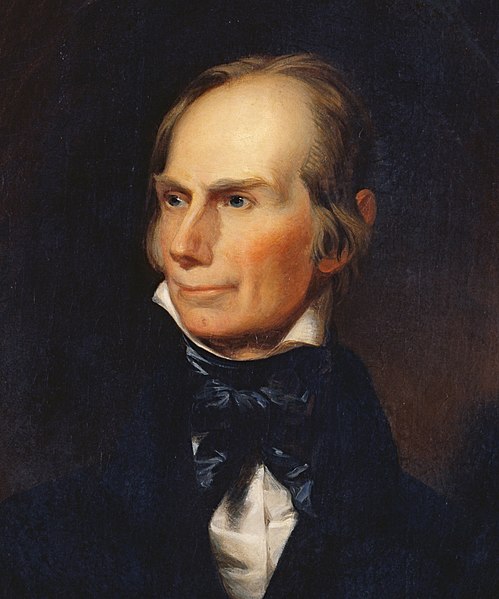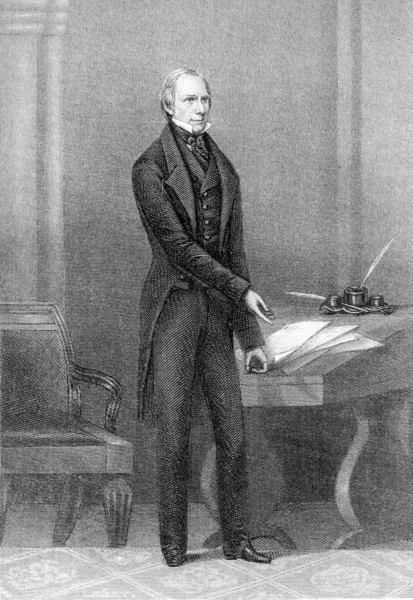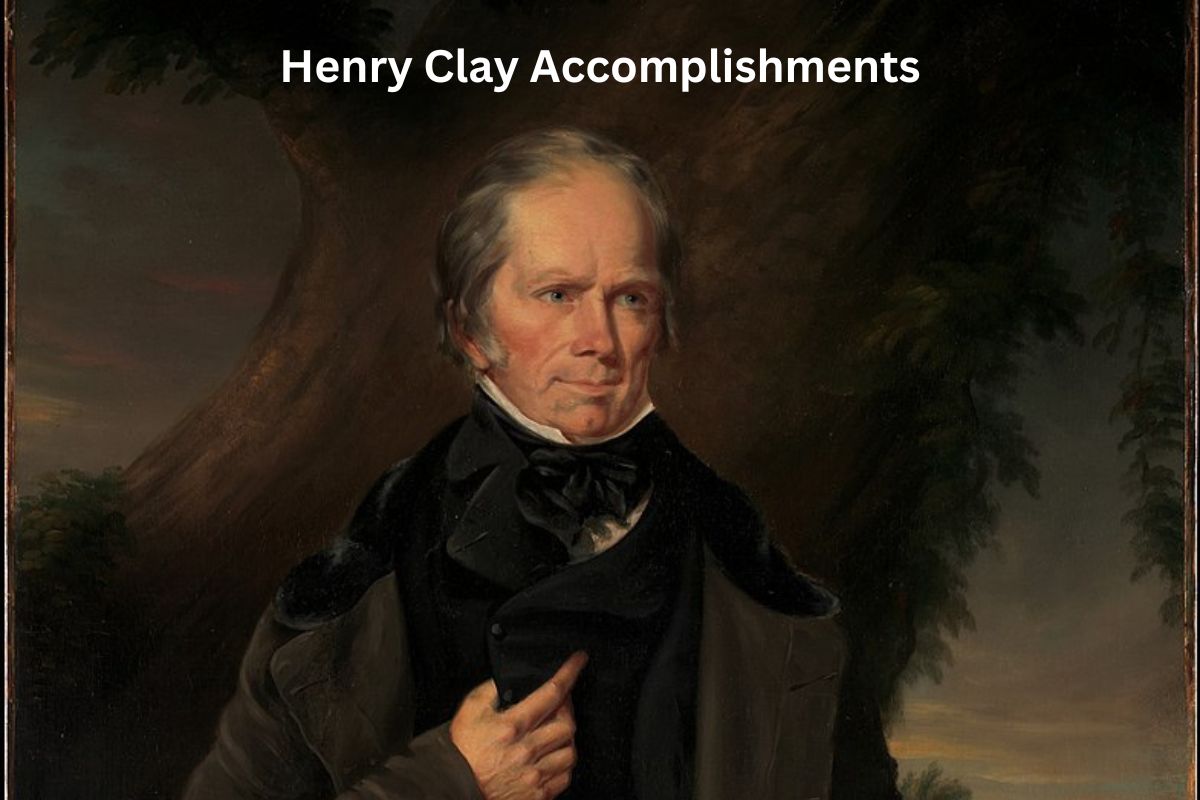Henry Clay was a prominent American statesman and politician who lived from 1777 to 1852. Throughout his long and influential career, he achieved numerous accomplishments and played pivotal roles in shaping American politics during the 19th century.
Known for his advocacy of the American System, his skill in brokering critical compromises, and his leadership within the Whig Party, Henry Clay left a lasting legacy in American history.
In this discussion, we will explore some of his key accomplishments and contributions to the United States.
Accomplishments of Henry Clay
1. Advocated for the American System
Henry Clay was a strong proponent of the American System, a comprehensive economic plan that aimed to strengthen the United States’ economy and promote national unity.
Also Read: Henry Clay Timeline
The American System had three key components:
- Protective Tariffs: Clay advocated for protective tariffs, which were taxes on imported goods. These tariffs were designed to protect American industries from foreign competition by making imported goods more expensive. The revenue generated from tariffs would also help fund government projects.
- National Bank: Clay supported the establishment of a national bank, which would serve as a central financial institution for the federal government. The bank would help stabilize the national currency and provide a source of credit for economic development.
- Internal Improvements: Clay advocated for investments in internal improvements such as roads, canals, and infrastructure projects. These improvements were seen as essential for economic growth and the efficient movement of goods and people across the country.

2. Played a pivotal role in the Missouri Compromise
In 1820, the United States faced a crisis over the issue of slavery’s expansion into new territories. Missouri sought admission to the Union as a slave state, which upset the balance between free and slave states.
Henry Clay played a crucial role in brokering the Missouri Compromise. This compromise allowed Missouri to enter the Union as a slave state while admitting Maine as a free state, maintaining a delicate balance.
Also Read: Compromise of 1850 Facts
Additionally, it established a line (36°30′ parallel) below which slavery would be prohibited in the Louisiana Territory, except for Missouri. This compromise helped temporarily ease tensions over the issue of slavery.
3. Negotiated the Compromise Tariff of 1833
The Nullification Crisis of 1832-1833 revolved around South Carolina’s opposition to federal tariffs, particularly the Tariff of Abominations. South Carolina declared the right to nullify federal laws it deemed unconstitutional, posing a threat to the Union.
Henry Clay stepped in as a mediator and negotiated the Compromise Tariff of 1833. This compromise gradually reduced tariff rates over several years, addressing South Carolina’s concerns while affirming federal authority.
It helped defuse the crisis and avert a potential civil conflict, demonstrating Clay’s skill as a negotiator and compromiser.
4. Crafted the Compromise of 1850
The Compromise of 1850 was a landmark legislative package aimed at addressing the contentious issue of slavery’s expansion into newly acquired territories following the Mexican-American War. Henry Clay played a central role in crafting this compromise, which included several key provisions:
- California’s Admission as a Free State: The compromise allowed California to enter the Union as a free state, maintaining the balance between free and slave states.
- Fugitive Slave Act: The compromise included a stringent Fugitive Slave Act, requiring the return of escaped slaves to their owners, even in free states. This provision was highly controversial and faced resistance in the North.
- Popular Sovereignty: It allowed the territories of New Mexico and Utah to determine the issue of slavery through popular sovereignty, where the residents would vote on whether to permit slavery.
- Slave Trade Ban in Washington, D.C.: The compromise abolished the slave trade (but not slavery itself) in the nation’s capital, Washington, D.C.
- Texas Border Resolution: It resolved the Texas boundary dispute by compensating Texas for ceding territory to New Mexico.

5. Served as Speaker of the House
Henry Clay served as the Speaker of the House of Representatives on multiple occasions during his political career. This role is a testament to his leadership skills and parliamentary acumen.
As Speaker, he presided over House debates, maintained order, and played a crucial role in shaping the legislative agenda. His tenure as Speaker helped him build strong relationships and influence within Congress.
6. Elected multiple times as a U.S. Senator from Kentucky
Henry Clay represented the state of Kentucky in the U.S. Senate over several non-consecutive terms. His repeated election to the Senate demonstrated his enduring popularity and the trust that the people of Kentucky had in him as their representative in the federal government.
During his Senate career, Clay continued to champion his policy proposals and played a significant role in shaping national policy.
7. Participated in treaty negotiations (e.g., Treaty of Ghent)
Henry Clay had a notable role in diplomacy and treaty negotiations. One of his most significant contributions was as a member of the American delegation that negotiated the Treaty of Ghent in 1814.
This treaty ended the War of 1812 between the United States and Great Britain. Clay’s involvement helped secure a peace agreement that preserved American sovereignty and territorial integrity, despite the war’s inconclusive outcome.

8. Helped found the Whig Party
Henry Clay played a pivotal role in the formation of the Whig Party in the 1830s. The Whig Party emerged in opposition to the policies of President Andrew Jackson and his Democratic Party.
Clay, along with other prominent politicians like Daniel Webster, helped unite disparate anti-Jackson factions into a coherent political force.
The Whig Party sought to promote economic development, a strong federal government, and internal improvements, reflecting Clay’s own political priorities.
9. Supported the Second Bank of the United States
Throughout his career, Henry Clay was a strong advocate for the establishment and maintenance of a national bank. He believed that a central bank was crucial for stabilizing the nation’s currency and providing a source of credit for economic growth.
Clay’s support for the Second Bank of the United States aligned with his broader vision of the American System, which aimed to promote economic self-sufficiency and growth.
10. Ran for President of the United States three times
- Henry Clay ran for the presidency on three separate occasions but was unsuccessful in securing the office. His presidential campaigns were significant moments in American politics:
- In 1824, Clay ran as one of the candidates in a highly contested election. Although he did not win the presidency, he played a role in the “Corrupt Bargain” controversy when he threw his support behind John Quincy Adams, who became president.
- In 1832, he ran as the National Republican Party’s candidate but was defeated by the incumbent, Andrew Jackson.
- In 1844, Clay ran as the Whig Party’s nominee but narrowly lost to James K. Polk.
Despite his unsuccessful presidential bids, Clay remained a major figure in American politics and continued to exert significant influence on national policy as a legislator and statesman.
Henry Clay’s contributions to American politics were extensive and enduring, and his impact on the nation’s history remains significant, particularly in the realms of economic policy, compromise, and the development of political parties.
